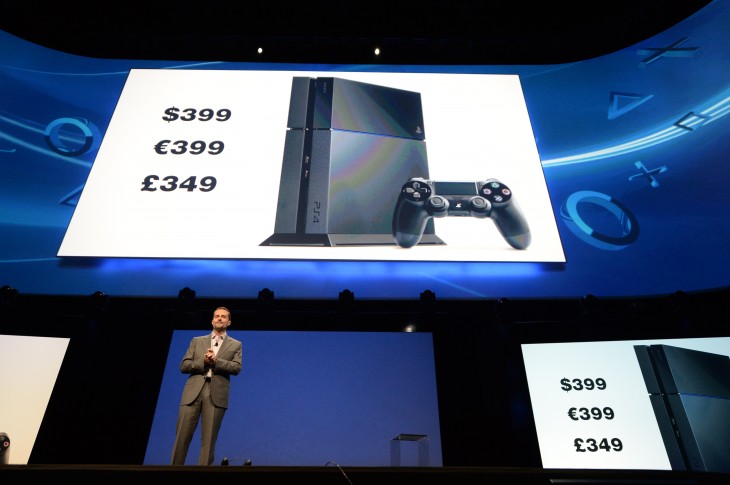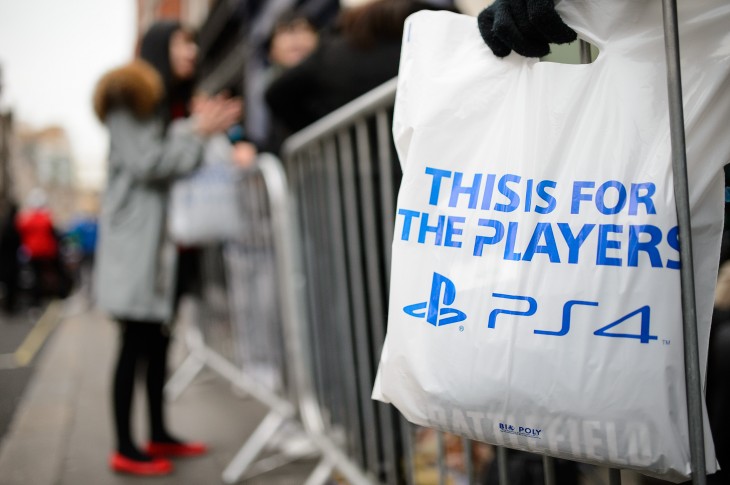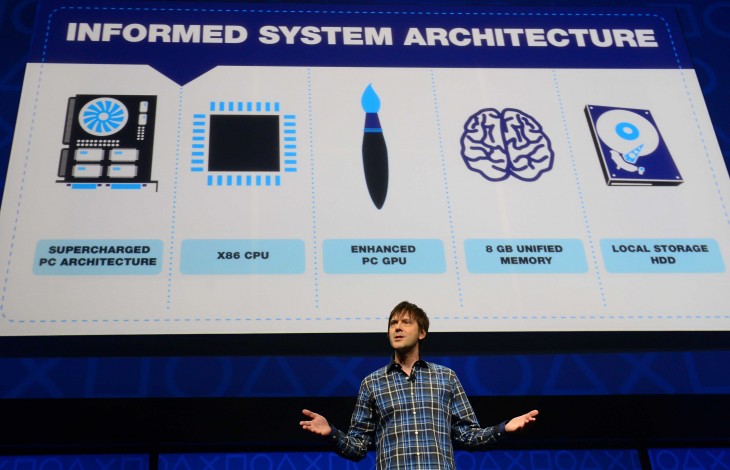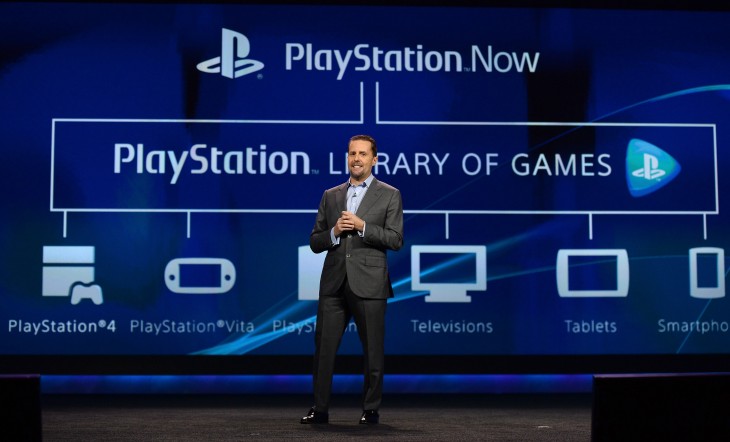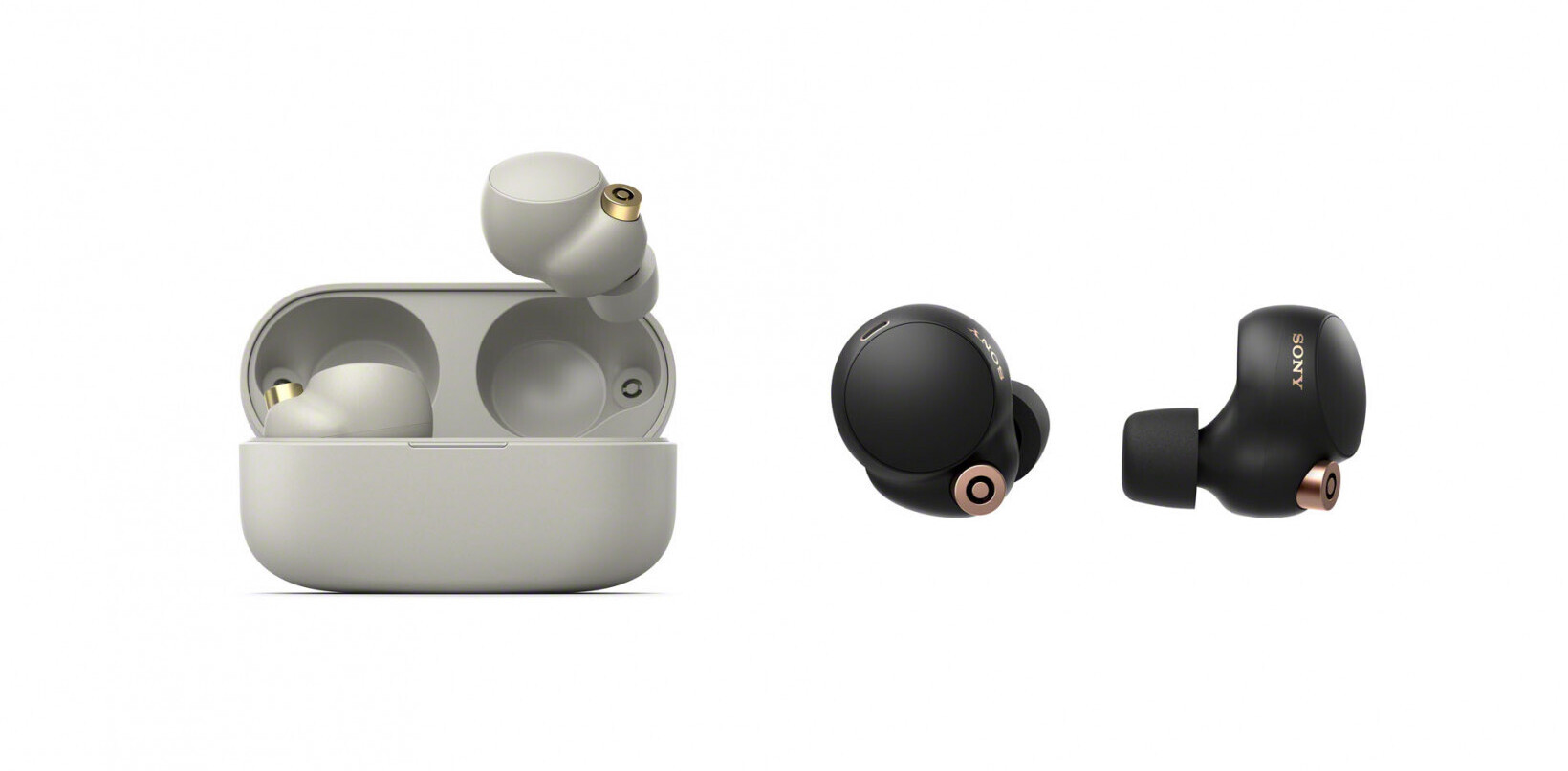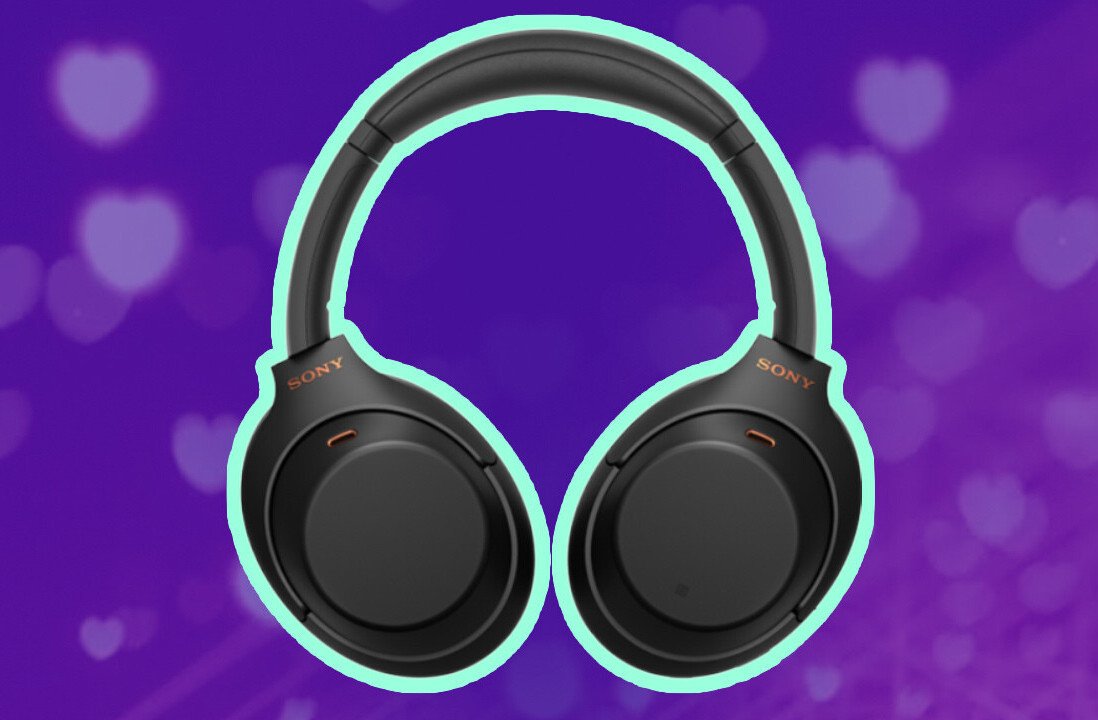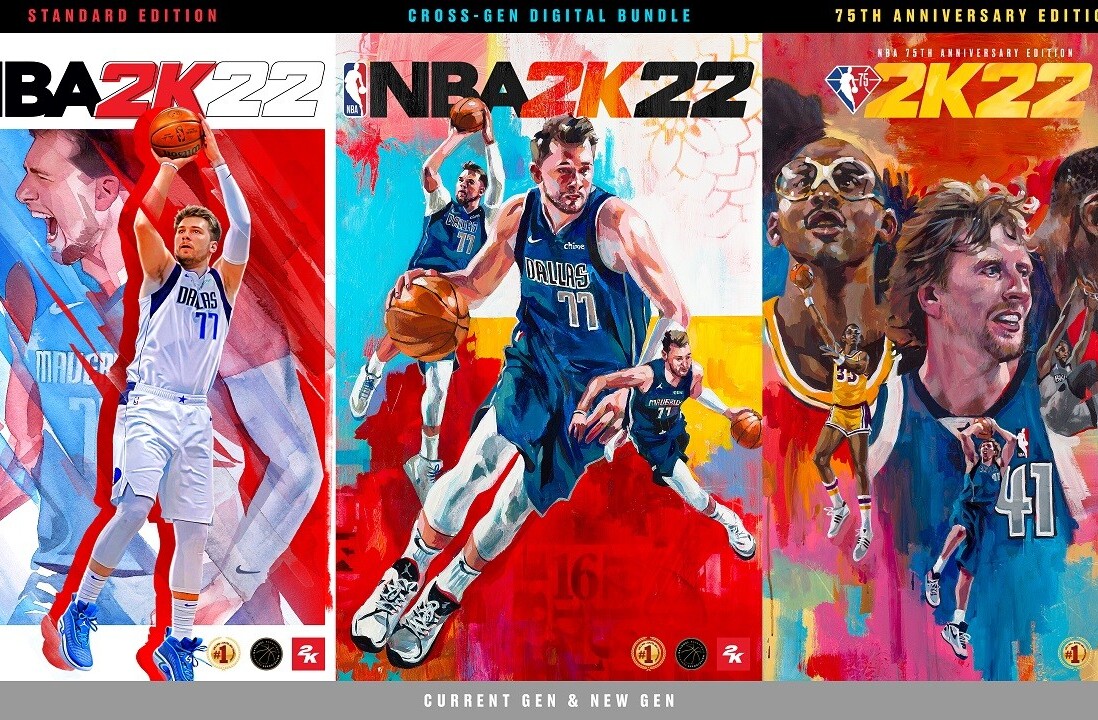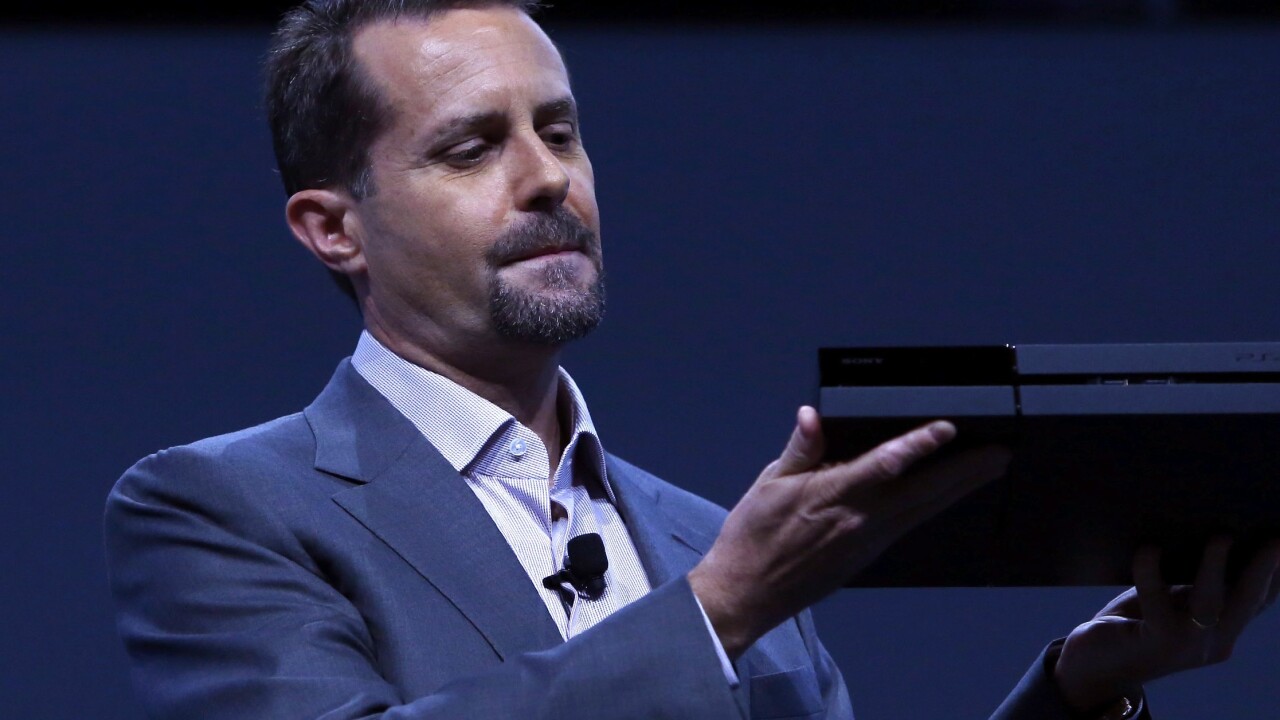
The PlayStation 4 was the best-selling next-gen console in the US last month, according to the latest estimates released by NPD. Although the exact numbers weren’t published, Sony says it sold nearly double the amount of its closest competitor, which NPD has confirmed as the Xbox One.
Although the perceived rivalry between the PlayStation 4 and the Xbox One will always dominate the headlines, it’s worth noting just how successful and effective Sony has been on its own at the start of this generation. The Japanese firm had seven years to learn from its early mistakes with the PlayStation 3 and these latest NPD numbers suggest that it’s done exactly that.
What follows are what we consider to be some of the key factors and decisions that Sony has made to give the PlayStation 4 a near-perfect start.
Price
In the US, the base unit of the Xbox One currently costs $100 more than the base unit of the PlayStation 4. If you forget the additional peripherals, in-store bundles and pre-order games, that is the price gap between these two consoles.
It would be a stretch to say that the cost of a console is the most influential factor in the average person’s buying decision. Price does play an important role though, especially for anyone on a budget. With an extra $100, you can pick up two other full-price, packaged games such as Battlefield 4 and Need for Speed Rivals, or an extra controller (or two, at a pinch) if you want to get some of your friends and family members involved.
For comparison, the entry-level PlayStation 3 cost $499 at launch, which was $100 and $200 more than the Xbox 360 Premium and Xbox 360 Core respectively in the US.
Controller
Many will argue that the Xbox 360 controller is one of the best gamepads ever made. While Sony made very few aesthetic changes between the DualShock 2 and DualShock 3, Microsoft made massive improvements to the original Xbox controller for when it released the Xbox 360.
(Although the less said about that squishy D-Pad, the better.)
Clearly, Sony was taking notes; the DualShock 4 is by far the best controller the firm has built to date. The official gamepad for the PlayStation 4 has a little extra heft and its analog sticks are now slightly further apart, with a small concave pool to stop your thumbs from suddenly slipping.
It’s a clear improvement. While Microsoft has made its own revisions for the Xbox One controller, I know a number of people who still prefer the Xbox 360 controller. It wasn’t necessarily a misstep – the force feedback triggers are considered to be an excellent addition – but the consensus seems to be that the new controller is a step sideways, rather than forward.
Targeting gamers
Traditionally, most early adopters of any new console can be defined as “gamers”. With the exception of the Nintendo Wii in 2006, it’s always the most passionate players and platform supporters that pick up new hardware in the first few months.
They’re excited about owning a new platform and don’t mind buying one before the inevitable price-cut and discounted bundles hit store shelves. Furthermore, they’re happy to own a new console before any top-tier games have been released for it. With this in mind, Sony targeted gamers with its early messaging and marketing for the PlayStation 4. It couldn’t have been clearer, given the tagline was : This Is For The Players.
Microsoft, meanwhile, used the Kinect and its TV integration to target the average consumer. While some of the company’s early adverts did cater to gamers with imagery of exclusive titles such as Titanfall, Forza 5 and Dead Rising 3, overall its focus was far broader than Sony’s.
PlayStation Plus
Sony transformed what could have been a red cross on the PlayStation 4’s scorecard into one of the most beloved parts of the system. Just like the Xbox 360 and Xbox One, Sony asks that you pay an additional subscription – called PlayStation Plus – to access online multiplayer with the PlayStation 4. While that’s a significant reversal from the PlayStation 3, Sony has effectively buried it with a bundled service called Instant Game Collection.
As part of the membership, PlayStation Plus subscribers can download a number of video games for free to their PlayStation 4, PlayStation 3 and PlayStation Vita. For its next-gen system, this included Contrast and Resogun at launch, followed by Don’t Starve in January and Outlast in February.
These are smaller titles from independent studios, but each of them offers a creative, high quality experience for the system. The initiative has been incredibly effective at solving one of the most obvious problems with a console launch – a distinct lack of games.
In short, PlayStation 4 owners feel like they’re getting even better value for money. Microsoft has a similar initiative called Games with Gold for the Xbox 360, but it’s yet to arrive on Xbox One or offer the same caliber of titles available on PlayStation Plus.
Indie love
To reinforce its marketing campaign ‘This Is For The Gamers’, Sony highlighted its support for independent game developers during its E3 press conference. Almost every gamer and journalist I’ve spoken to appreciated the gesture, as it emphasized Sony’s support for the grassroots ‘indie’ movement, where much of the industry’s innovation and young talent is being nurtured at the moment.
Some of the most anticipated games that were shown, such as Transistor, Galak-Z and The Witness, are still in development. Even so, the influx of indie titles that have arrived as part of the Instant Game Collection has quickly solidified the PlayStation 4’s reputation as an indie-friendly video game system. For gamers and developers alike, this creates the perception that Sony has its heart and priorities in the right place.
Next: Power, Twitch and PlayStation Now…
Power
While no-one can definitively say that the PlayStation 4 is more powerful than the Xbox One, a number of cross-platform games show that Sony’s machine has a slight edge. Here are the facts: Call of Duty: Ghosts runs at native 1080p on the PlayStation 4, but only 720p on the Xbox One. Battlefield 4 runs at 900p, versus 720p. Assassin’s Creed IV: Black Flag runs at 1080p, versus 900p. Across several titles, the PlayStation 4 is running at a higher resolution than the Xbox One.
Graphical fidelity isn’t the whole story, however. Performance can be attributed to many different elements, including frame rate, scale, physics and latency. It’s also possible that developers will, over time, adjust to both hardware platforms and the differences between the two will become even more marginal.
Nevertheless, the PlayStation 4 is now considered to be the more powerful console. For comparison, Sony based the PlayStation 3 on Cell architecture, which led to a few early cross-platform games looking better on the Xbox 360. This time around, Sony went for the more familiar x86 architecture and in these early bouts with the Xbox One, the PlayStation 4 is taking the win.
Twitch streaming
Sony has a small, but growing group of customers that are promoting the PlayStation 4 for free. The console supported Twitch, the most popular live streaming platform for games, at launch with a refreshingly simple interface. Just press the share button on the controller, followed by the ‘broadcast gameplay’ option and you’re all done.
Streaming has become a hugely popular and influential part of the gaming community. In the past, broadcasting and recording footage from a console has been notoriously difficult, effectively capping the number of people that could get share their gameplay experiences.
With built-in Twitch support, anyone can stream a game – and have a potentially large audience watch them for free. For next-gen exclusives such as Knack and Killzone: Shadow Fall, that’s an extremely effective and organic marketing tool for gamers. If you’re wondering about the Xbox One, it’s expected to land sometime in the early part of this year.
PlayStation Now
PlayStation Now is Sony’s wild card at the moment. The idea of a Netflix-style video game streaming service is incredibly appealing, but as firms such as OnLive have found out, delivering it with an effective business model can be wrought with difficulties.
Although Sony has already shown PlayStation Now in action – a beta program is currently underway – a number of questions remain unanswered. How much will it cost? How many games will be available? What will the latency be like?
For the PlayStation 4, the service could give the next-gen console an unprecedented number of older games for players to enjoy. Given that the system has no backwards compatibility, that means top-tier PlayStation 3 exclusives such as The Last of Us, Uncharted and Ni No Kuni: Wrath of the White Witch would be available to customers who may have only bought an Xbox 360 in the previous generation.
Although it’s not available just yet, the promise of PlayStation Now will have been enough to tempt some customers into picking up a PlayStation 4. Another wise move from Sony, it would seem.
Future exclusives
While Titanfall will almost certainly help Microsoft to shift a bucketload of Xbox One consoles, Sony has its own share of platform exclusives in the pipeline including Infamous: Second Sun, Driveclub, The Order: 1866 and a fresh instalment in the Uncharted franchise.
Sony has been upfront about the first-party video games that it has waiting in the wings. In the previous generation, the PlayStation 3 had a strong line-up of exclusives – arguably more so than the Xbox 360 – and if can maintain that perception, players will continue to buy PlayStation-branded hardware.
Image Credit: Ben A. Pruchnie/Getty Images / OLIVER BERG/AFP/Getty Images / Eric Thayer/Getty Images / ROBYN BECK/AFP/Getty Images / EMMANUEL DUNAND/AFP/Getty Images / Ethan Miller/Getty Images
Get the TNW newsletter
Get the most important tech news in your inbox each week.
